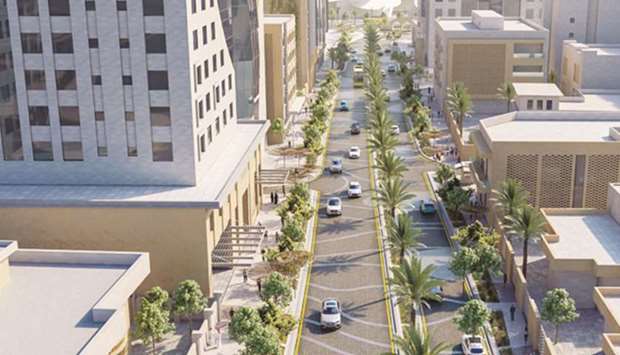The Doha Central Development and Beautification Projects will provide a further facelift to Doha through a host of infrastructure development and beautification works.
The projects, across their three phases, will make the city a ‘destination of choice’ where the needs of its people and visitors will be met and at the same time create memorable experiences by linking people to places and destinations through a convenient, safe and accessible public realm.
Besides, Central Doha’s landmarks will serve as points that will help people create their own mental map of the surrounding environment.
This will be achieved by providing pedestrian-friendly transportation, including footpaths and crossings, to encourage visitors using various modes of transportation.
The projects will promote walking, and enhance the identity of Qatar’s historical and cultural legacy and recognise the natural environment of the country.
l First phase
The projects are being implemented by the Supervisory Committee of the Beautification of Roads and Public Places in Qatar at the Public Works Authority (Ashghal). In a statement in June, the authority had said 20% of the works of the first package had been completed. The first phase include infrastructure development works like the development of a foul sewer drainage network, surface water drainage network, a treated effluent network, electricity network and communication network. This phase of the project also includes installing lighting poles, street furniture, traffic signals for vehicles and pedestrians, pedestrian crossings and shared paths for pedestrian and cyclists.
The project also aims to reduce traffic volume by promoting pedestrian movement besides increasing tree plantation and landscaping.
Abdullah Bin Thani, Al-Dostour, Al-Sakhama, Ras Brouq, Dar Al-Kutub, Bu Hasaya, Al-Ghous and Ras Usheirej streets will be developed in this phase while Abdulla Bin Thani Street will be fully paved with granite slabs and designed to make it possible in the future to close it completely for vehicles during celebrations.
l Second phase
Ashghal launched the second phase in June and this phase is aimed at developing the areas surrounding the National Museum of Qatar as well as those opposite to the Museum of Islamic Art (MIA). This will be done by developing and beautifying main streets and internal neighbourhoods in these areas in addition to infrastructure development works. Some 8.5km of surface water drainage network, 4.7km of foul sewer network, 6.8km of electricity network and 22.6km-long pedestrian and cycling paths will be developed while 329 decorative lighting poles will be installed and 1,400 trees planted.
Also, 10,000sqm of green areas will be set up.
l Third phase
Also launched in June, this phase features the development of 10.2km of a surface water drainage network, 11.2km of foul sewer drainage network, 4.7km of the electricity network, installing 515 decorative lighting poles, planting about 3,250 trees, development of about 30,000sqm of green areas and construction of 35.3km-long pedestrian and cycling paths. Besides, all the main streets will be covered with granite to give the area a unique feature.
l Involvement of Qatari artists
Ashghal has signed contracts with Qatari artists to submit artworks and sculptures proposals in various locations within the project area.
This comes as part of the efforts to raise the aesthetic value of these locations and transform the entire area into a tourist attraction.
Contracts have been signed with Qatari artists Hassan al-Mulla, Salman al-Malik, Ali Hassan, Wafika al-Eissa, Mohamed al-Ateeq and Jameela al-Shuraim.
The works and artistic designs resulting from the new contracts would “create a distinctive spirit for the area with a special look matching its nature and special design”. The contracts were signed with the Qatari artists to submit preliminary artwork proposals for sculptures and murals that would reflect the identity of Qatar in the eyes of its citizens and add the imprint of Qatari artists.
The initiative would cover different locations, which would be announced later in conjunction with the project schedule and in co-ordination with Qatar Museums, the Ministry of Municipality and Environment and Ministry of Culture and Sports.

Digital renderings of the project.

